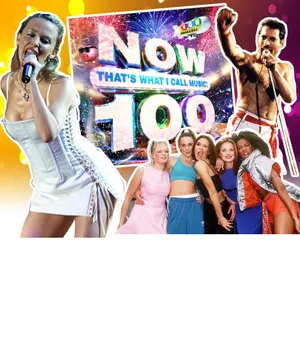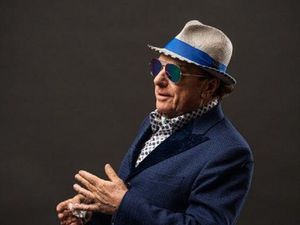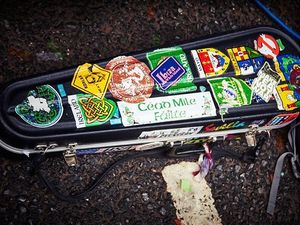Now 100: Take a look at the history of the album series ahead of landmark release
It has captured the best – and, some might say, the worst – of British pop music over the past 35 years.

Now it is a national institution, the nation’s favourite music brand, with more than 120 million sales.
And now it is about to release Now100, a landmark that has led to the release by its record company of a shortlist of the best songs it believes have featured on the records over the decades. There will also be an awards ceremony based on those lists to celebrate a musical institution upon which a generation has grown up. People will be given the chance to vote for their favourites to coincide with the release of Now 100 next month.
Now That’s What I Call Music! compilations have been the most popular CDs every year since 2010 – except for 2015, when Adele came top.
The series began in 1983 when the first ever Now compilation sold 1.1 million copies. It featured 28 artists; Kajagoogoo, UB40 and Culture Club had two songs each, while Peabo Bryson and Roberta Flack doubled up for the duet ‘Tonight, I Celebrate My Love’.
Eight artists on Now 1 have never made another appearance, including Mike Oldfield and Bonnie Tyler.
From small acorns do tall oaks grow and the Now compilations series have racked up an incredible 250 hours of music and featured 2,069 artists. The series has also been a byword for popular songs: Now 88, for instance, had the most No 1 singles with 15.
The series took its name from a 1920s advertising poster for Danish bacon featuring a pig saying “Now. That’s What I Call Music” as it listened to a chicken singing. Richard Branson had bought the poster for his cousin, Simon Draper, to hang behind Draper’s desk at the Virgin Records office. Remarkably, Branson married the girl in the shop where he bought the poster. Over half of the population have bought or been given a Now numbered compilation album in the past.
The series has changed with the times and as there has been a drift away from vinyl and cassette, digital versions have grown more popular. Since November 2005 the Now series have only been released on CD and digital download formats.
Now! compilations have spent 654 weeks at number 1 – up to the fourth week of Now 99 – and Now 4 was the only volume that didn’t get to Number 1. It spent two weeks at Number 2.
So far the series has featured 602 number 1 hits and there have been eight Beatles covers on Now albums. The most successful volume to date is 1999’s Now 44, which sold 2.3 million copies and is the biggest selling compilation album ever. Now 70 sold 383,002 units in it’s first week, the biggest ever sales of any Now album in a week
Now That’s What I Call Christmas is the sixth biggest selling album of all time, accumulating more sales than Michael Jackson’s ‘Thriller’ and Pink Floyd’s ‘The Dark Side of the Moon’. Every UK home owns on average over four Now albums.
The compilations have changed over the decades and Birmingham’s UB40 were the most popular band initially – appearing 13 times on the first 10 albums – more than any other artist. Phil Collins appeared eight times on the first 10 albums including his appearances with Genesis. He was matched by Freddie Mercury, if you count Queen.
Robbie Williams is the most-featured artist in the compilation series, with 30 appearances (x 5 in Take That). He also appears with charity projects Helping Haiti (Now 75), Justice Collective (Now 84), Artists for Grenfell (Now 97), and World Music project 1 Giant Leap (Now 52).
Calvin Harris is the second most featured artist with 26 appearances, Rihanna is the third most featured artist with 25 appearances, David Guetta and Kylie come joint fourth most featured artist with 24 appearances while Girls Aloud, Coldplay, Katy Perry, U2, Britney and Sugababes follow.
Next in line are Tinie Tempah, Justin Bieber, BEP, Boyzone, McFly, Little Mix, Justin Timberlake and Jason Derulo.
Calvin Harris (Now 80), Dua Lipa (Now 96), Quavo (Now 97), Justin Bieber (Now (97) and Khalid (Now 98) have made the most appearances on any one Now album, with three singles each.
It began as a good idea based on a funny advertisement – and 35 years on, Now is still going strong.





